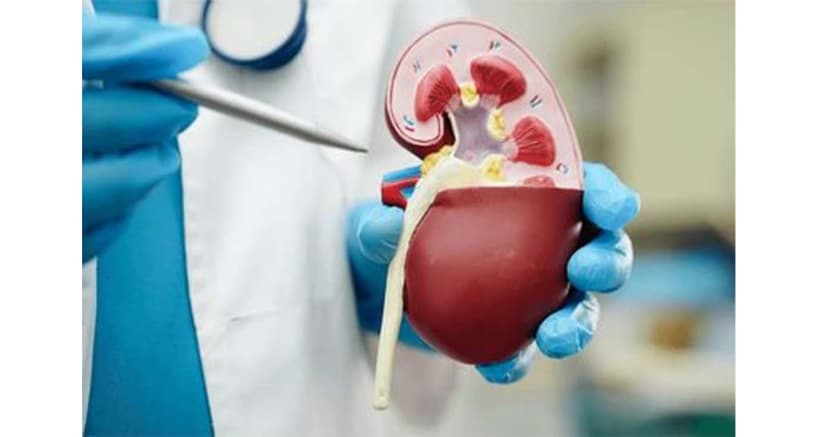The Science of Memory: How the Brain Stores and Retrieves Information
By:

Apex Hospitals
22-09-2024

Memory is one of the brain's foundational elements. It guides us through life by helping us learn from experiences and shaping our sense of self. It keeps us safe—like remembering not to touch a hot stove—and forms the stories that define who we are. But how exactly does the brain hold onto cherished memories or recall forgotten details with such precision?
The process of memory is extraordinary. Our brains can capture, store, and retrieve vast amounts of information, from familiar faces to facts learned in school. The science behind memory reveals how the brain organizes and manages these experiences. But what exactly is happening in our brains when we create a memory?
The simplest explanation is that the brain rewires itself each time a new memory is formed. This happens through synapses—tiny gaps between brain cells or neurons. Neurons communicate via an intricate electrochemical system. A change in one neuron's electrical charge releases chemicals called neurotransmitters across synapses, which are picked up by a neighbouring neuron. This communication strengthens the connection between neurons over time, making it easier for them to interact and solidify the memory. Conversely, when neurons rarely communicate, their bond weakens, and sometimes they stop transmitting altogether. At its core, memory is built by reinforcing these connections between networks of neurons.
How Does the Brain Store Memories?
At its core, memory is the brain’s way of encoding, storing, and retrieving information. The brain’s ability to store memories is a dynamic process that involves several regions working together, most notably the hippocampus, amygdala, and prefrontal cortex.
1. Encoding: The First Step in Memory Formation
Memory formation begins with this encoding process, as our sensory systems relay information to the brain. Encoding is transforming sensory input into a format the brain can interpret and store. This involves external stimuli—such as sight, sound, touch, taste, and smell—being converted into neural signals. These signals are then transmitted to various regions of the brain, particularly the hippocampus, a seahorse-shaped structure deep within the brain that plays a crucial role in forming explicit memories.
The hippocampus is essential in converting short-term experiences into long-term memories. For example, when you meet someone new, your brain captures their face, voice, and name, temporarily holding this data in short-term memory. Short-term memory can store only a limited amount of information for a brief period. However, if that person becomes significant in your life, the brain strengthens the neural connections associated with them, transferring the memory into long-term storage. This reinforcement of neural pathways ensures that important information is retained for future recall.
2. Storage: Strengthening Neurons
Once a memory is encoded, it needs to be stored. At the biological level, memories are stored by strengthening connections between neurons (brain cells). Neurons communicate with each other through tiny gaps called synapses. This process, called synaptic plasticity, involves the release of neurotransmitters that strengthen the bond between neurons.
When you repeatedly recall or use a particular memory, the synapses associated with that memory become stronger. Over time, this reinforcement creates a more robust neural pathway, making it easier for the brain to access that memory in the future. This is why practicing something repeatedly—like playing a musical instrument or studying for an exam—helps solidify it in long-term memory.
3. Retrieval: Accessing Stored Information
Retrieving a memory involves reactivating the same neural pathways used during the initial encoding and storage processes. This is where the brain retrieves stored information and brings it back into consciousness. Depending on the complexity and emotional significance of the memory, different parts of the brain, including the hippocampus and prefrontal cortex, are engaged during retrieval.
For example, when trying to remember where you left your keys, your brain retrieves the stored memory of that event, possibly using cues (such as visualizing the last place you saw them) to aid in the retrieval process. This demonstrates how the brain uses associations to retrieve information.
Types of Memory
The brain processes different types of memory in various ways. There are three primary categories of memory:
1. Sensory Memory: A brief, immediate memory from sensory experiences, like seeing a flash of light or hearing a quick sound. These memories typically last only a few seconds.
2. Short-term Memory: Also known as working memory, short-term memory holds the information we’re actively thinking about, such as remembering a phone number long enough to dial it. It has a limited capacity and duration, typically lasting only 20–30 seconds.
3. Long-Term Memory: The brain's vast repository of information that can last from minutes to an entire lifetime. Long-term memory is further divided into:
Role of Sleep in memory formation
Sleep plays a vital role in memory formation by helping the brain consolidate and strengthen newly acquired information. During sleep, particularly during deep sleep (slow-wave sleep) and REM (rapid eye movement) stages, the brain actively processes and organizes memories, transferring them from short-term to long-term storage.
Memory and Its Mysteries
Despite the advances in neuroscience, memory remains a complex and somewhat mysterious process. We still don’t fully understand how the brain chooses which memories to keep or how some memories become distorted or lost over time. Memory disorders, such as Alzheimer's disease, continue to pose significant challenges, as they highlight how crucial yet fragile memory can be.
Memory is more than just a collection of facts and experiences. It plays a vital role in shaping our identity. Our memories create the narrative of our lives, allowing us to reflect on the past, learn from experiences, and plan for the future. They define our sense of self, provide continuity between who we are and who we are, and help us connect with others through shared experiences. Whether through studying, reflecting on past experiences, or cherishing essential moments, our memories are an influential and integral part of the human experience.
FAQS
Related Articles
Connect With Us
Health In A Snap, Just One App.
KNOW MORE



































































































